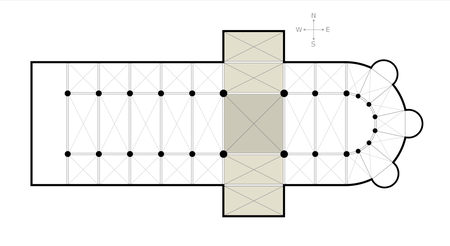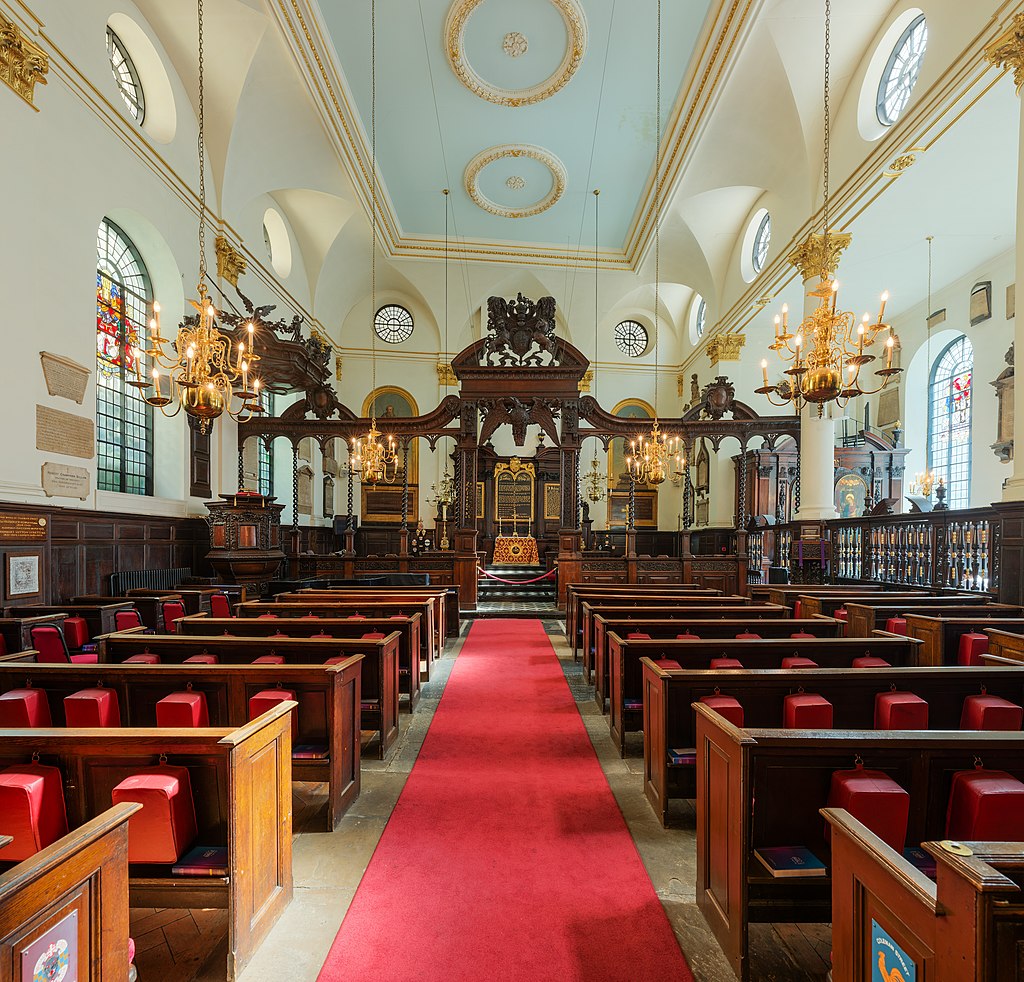| Plan of a large Latin cross church with nave highlighted | |
 |  |
Strict definition Wikimedia Commons | Broader definition Wikimedia Commons |
The nave is the central part of a Christian church, used by the congregation. It stretches from the (normally western) main entrance or rear wall, to the transepts Part of a Christian church crossing the area between the nave and the chancel, forming a characteristic cruciform shape., or in a church without transepts, to the chancel
Part of a Christian church crossing the area between the nave and the chancel, forming a characteristic cruciform shape., or in a church without transepts, to the chancel Part of a church containing the altar, used by the officiating clergy.. If a church contains side aisles, the term nave strictly applies only to the central aisle. Until the Protestant Reformation during the 16th century, the nave was often separated from the choir and clergy by a screen,[1] known variously as a rood screen
Part of a church containing the altar, used by the officiating clergy.. If a church contains side aisles, the term nave strictly applies only to the central aisle. Until the Protestant Reformation during the 16th century, the nave was often separated from the choir and clergy by a screen,[1] known variously as a rood screen Screen separating the chancel from the nave, typically in late medieval Christian churches., a chancel screen, or a choir screen.[2] Maintaining the nave was traditionally the responsibility of the parishioners.[3]
Screen separating the chancel from the nave, typically in late medieval Christian churches., a chancel screen, or a choir screen.[2] Maintaining the nave was traditionally the responsibility of the parishioners.[3]
Nave is derived from the Latin navis, meaning “ship”, perhaps in reference to the Barque of St PeterAncient Christian symbol for the Church., the first pope, or Noah’s Ark; indeed, many naves are shaped like upside-down boats. Until the Reformation, when very long sermons became the norm, naves did not contain pews for the congregation to sit on. Instead there were stone benches set into the wall, which is the origin of the saying “the weakest go to the wall”.[4]


